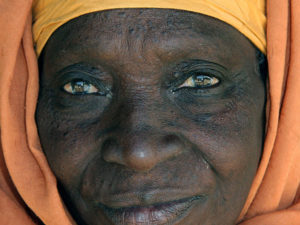Three ways to prevent and respond to global health emergencies

The role of the WHO is to coordinate the response to a global health emergency
Last week, the International Health and Nutrition, and Africa working groups at the Society for International Development Washington Chapter (SIDW), organized a very important event on Health Systems in Africa. The goal of the event was to figure out if there is a game plan to prevent and respond to the next global health emergency. The recent Ebola epidemic showed important systemic weaknesses in the countries experiencing the epidemic, as well as in the global response and recovery.
With the growing challenges of Zika, diabetes and other communicable and non-communicable diseases, this panel raised important issues. If you were not able to attend or watch the event online, you can access the event here.
I would like to share with my own top 3 actionable conclusions from that event which you can use to take action right away. Any more than three points is usually too many to act upon in the short-term and less than that is not enough to make an impact. That is why I always focus on the top 3 actions. I suggest these three to establish your game plan to get ready for the next emergency in global health:
- Know how to get in touch with the nearest GOARN focal point, the global outbreak and alert response network. GOARN was created in the year 2000 to coordinate the response to an outbreak. GOARN is not perfect and needs all our help to do its job.
- Lead a group for all partners and stakeholders to plan and implement the guidelines of the International Health Regulation. In 2005, 196 countries agreed to implement a number of regulations to prevent, detect and respond to public health emergencies. This document has everything all countries need to get ready. And it is most likely that your country is a signatory, so better get started to implement the IHR. Access the IHR documents here, then access the portal to log in and report in accordance with the IHR.
- Finally, global health experts and health professionals must remember that GOARN and the IHR are part of a much bigger context, that is, the health system in each country. The Disease Control Priorities project listed all the cost-effective ways to improve how health systems work. Now, DCP3 is out and we are again reminded that primary health care (PHC) is the way to deliver services. Disease control programs, of which DCP2 and DCP3 list over 100, are vertical programs to control diseases and health problems. These programs are the way a country manages the activities that need to be implemented to prevent and control a disease. However, services are delivered in the form of “packages” that include several of those activities from different programs that meet the health needs of the patient. Patient-centered care is the key to successful patient outcomes and requires integration of activities (a.k.a. interventions) from different programs. This month, The Lancet published a paper analyzing DCP3 and concluded that over 4 million lives can be saved every year if adequate integration of disease control programs into PHC packages. Please read this paper and contribute to develop a PHC package that meets the needs of your country and helps to save lives.
WHO cannot do everything. We all must be part of a concerted effort to get on the game plan for the next emergency. These three ways are the way to get started. Let me know what results you get. I am sure you will be ready.
To learn more about improving health systems, visit the RGH website or request a consultation. Or join our bi-weekly newsletter – the RGH update for news and information about improving health systems worldwide.


